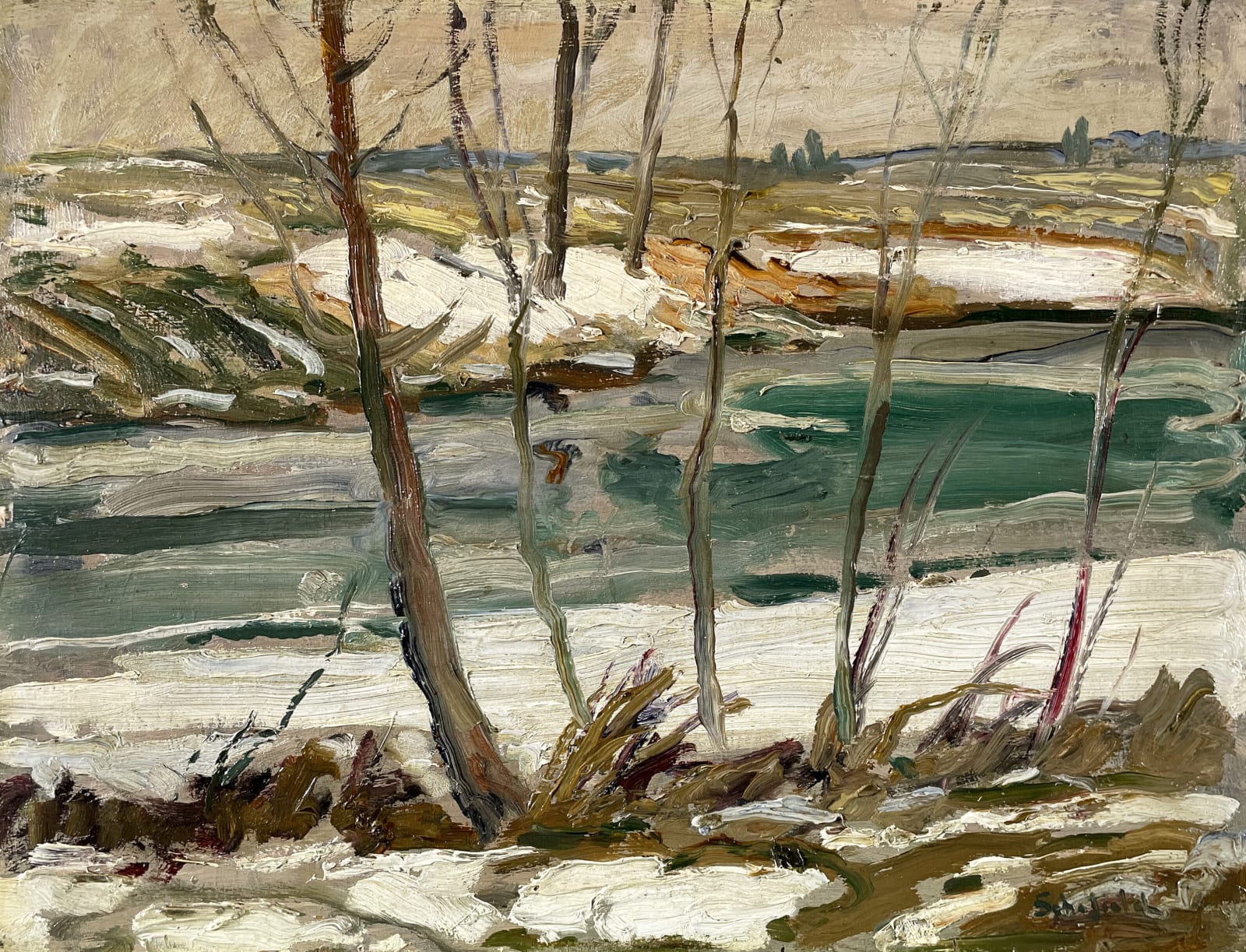Walter Elmer Schofield 1867-1944
Winter River
Oil on board
10 1/2 x 13 1/2 inches (26.7 x 34.3 cm)
Framed dimensions: 15 x 18 inches
Framed dimensions: 15 x 18 inches
Signed lower right: Schofield
In Winter River, Walter Elmer Schofield demonstrates the mature painting style for which he became best known. Painted en plein air, the energetic brushwork and thick impasto effectively communicate the...
In Winter River, Walter Elmer Schofield demonstrates the mature painting style for which he became best known. Painted en plein air, the energetic brushwork and thick impasto effectively communicate the rapidity with which Schofield painted and the way his technique captured the essence of a place through dazzling juxtapositions between form, color, and light. As a comrade of Edward Redfield, one of the great proponents of plein-air painting, Schofield learned the importance of painting outdoors and made the practice a cornerstone of his artistic method. All his paintings reveal his keen powers of observation and the uniqueness with which he put what he saw on canvas.
During the first three decades of the twentieth century, Schofield was regarded as one of America’s finest landscape painters. He braved brutal weather conditions to capture the panoramic snow scenes for which he was most acclaimed. Even though Schofield traveled widely, he is credited with being one of the great disseminators of the Pennsylvania School of Impressionism. His compositional style and choice of subject matter are very much in keeping with Edward Redfield’s, the dean of the Pennsylvania School. Yet Schofield took the influence of his mentor and transformed it into something entirely his own. His treatment of light and shadow, broad brushwork, and heavy outlines are some of the finest hallmark’s Schofield’s personal style – all of which are readily apparent here.
During the first three decades of the twentieth century, Schofield was regarded as one of America’s finest landscape painters. He braved brutal weather conditions to capture the panoramic snow scenes for which he was most acclaimed. Even though Schofield traveled widely, he is credited with being one of the great disseminators of the Pennsylvania School of Impressionism. His compositional style and choice of subject matter are very much in keeping with Edward Redfield’s, the dean of the Pennsylvania School. Yet Schofield took the influence of his mentor and transformed it into something entirely his own. His treatment of light and shadow, broad brushwork, and heavy outlines are some of the finest hallmark’s Schofield’s personal style – all of which are readily apparent here.
Provenance
Private collection, PennsylvaniaPlease join our mailing list
* denotes required fields
We will process the personal data you have supplied in accordance with our privacy policy (available on request). You can unsubscribe or change your preferences at any time by clicking the link in our emails.



